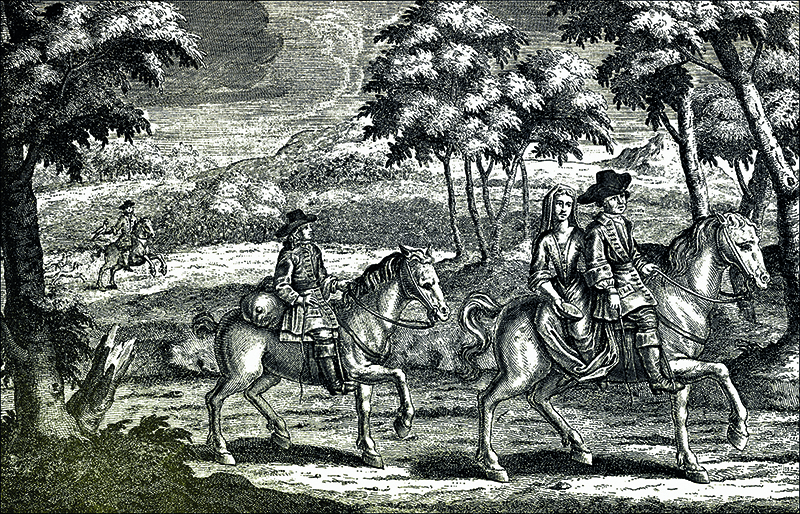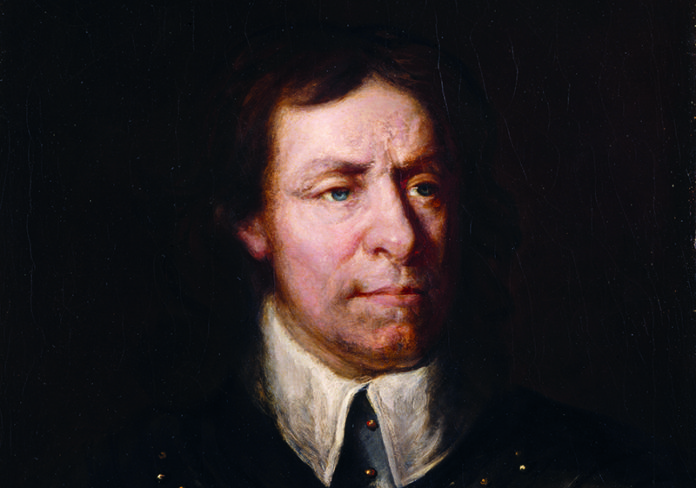Oliver Cromwell was quick to seize control after the shocking death of Charles I, but was he hero or villain?
On January 30, 1649 48-year-old King Charles I said goodbye to his children at St James’s Palace and was escorted to the Banqueting House on London’s Whitehall. It was a bitterly cold day and he fortified himself with a little bread and claret. Then he stepped through the window to a specially prepared public scaffold outside. He was wearing two shirts against the chill, lest he should shiver and onlookers think he was afraid.
READ MORE: Oliver Cromwell and the English Civil War: Part I
“I go from a corruptible to an incorruptible Crown, where no disturbance can be,” Charles declared with dignity and, invoking his vision of absolute kingship, offered himself as “the martyr of the people”. An executioner struck off his head. Among the watching crowd there arose, as one eyewitness recorded, “a groan as I have never heard before and desire I may never hear again.” The regicide sent shockwaves throughout Europe.

It was hard to believe what had happened and even harder to imagine what would happen next in a country set to be ruled without royalty. After a decade shattered by civil wars thanks to a King and Parliament at loggerheads over finances, religion and power, Charles had been put on trial before a High Court of Justice accused of high treason “against the realm of England”; in short he had been blamed for all the bloodshed.
Throughout the week-long trial, Charles had declined to acknowledge the legality of the court and refused to plead. “I have a trust committed to me by God, by old and lawful descent, I will not betray it, to answer a new unlawful authority … I do stand more for the liberty of my people, than any here that come to be my pretended judges …” His death warrant was nevertheless signed by 59 commissioners, many of them extremely reluctant. The third signatory, Oliver Cromwell, was persuaded to do so by “Providence and necessity”.
The deed done, the monarchy was abolished along with the House of Lords, and a Commonwealth was established. Cromwell, Commander-in-Chief of the army, pushed home the new government’s military supremacy, with campaigns in Ireland (1649–50) notorious for the bloody massacres at Drogheda and Wexford, and campaigns in Scotland (1650-51). Attempts by the dead King’s son, Charles II to recover the Crown with a Scottish-Royalist army were ended at the Battle of Worcester (1651), a story told in the city today in The Commandery. Charles’ escape of course became a staple of his subsequent romantic history – hiding up an oak tree at Boscobel House, Shropshire, and fleeing to the Continent disguised as a servant.

But the question remained: what exactly was this new world of the Commonwealth and its aims? In the immediate term, government needed to restore social stability and there were calls for reform of the legal system, for every adult male to be given the vote, for land to be redistributed. A divided Parliament dithered, with moderates also fearing Cromwell and radical elements in the powerful New Model Army.
In the end a frustrated Cromwell upbraided Parliament on April 20, 1653, calling members whoremasters, drunkards and unjust men: “You have sat too long for any good you have been doing lately … In the name of God, go!” Thus he dissolved Parliament – ignoring the irony that Charles I had rashly pursued just such a route – and seized power, ruling first via the Barebones Parliament, then from December 1653 through his appointment as Lord Protector. He would later be offered the Crown – people felt that at least the role of a sovereign was circumscribed – but he declined, preferring to carve his own role: like a king but with greater powers.
Much is made of the killjoy atmosphere of the Interregnum (1649–60), the 11 years between the execution of Charles I and the Restoration of Charles II, and the Protectorate’s “reformation of manners” enforced by Major Generals across the regions was deeply unpopular. All the more boisterous aspects of life were curbed or banned, including swearing, drunkenness, inns, brothels, theatres and horse racing. “Old Christmas is kickt out of Town… you see the world turn’d upside down”, a ballad lamented
of the outlawing of celebrations surrounding Christmas Day.
Administratively, the Interregnum saw some progress made, including efforts put into building a stronger Navy. There was greater religious tolerance, and measures were taken to formally allow the readmission of Jews to England (banished since Edward I’s expulsion in 1290). Finances, wrecked by years of civil war, remained problematic, and keeping the mutually loathing Parliament and New Model Army in check required all the boldness and strength of a man like Cromwell. Indeed, just how much the whole republican experiment had come to depend on him became clear when, after an illness, he died in 1658, aged 59. His nominated successor as Protector, his son Richard, proved simply unable to fill his shoes.
The Protectorate quickly unravelled and within a year ‘Queen Dick’, as Richard was scornfully called, resigned. Amid the chaos Parliament decided that government should
once again be by King, Lords and Commons, and Charles II was invited back. In May 1660 the tall, dark, glamorous Merry Monarch was met by cheering London crowds restless for the reinstatement of royalty, maypoles, mince pies and other staples of British life. Oliver Cromwell was declared a traitor and his body was exhumed from Westminster Abbey to be posthumously executed.
It had been a breathless, brutal period in the country’s history: a quarter-century of civil wars, regicide and political, religious and social upheavals. But which of the chief protagonists, ultimately, was hero or villain, and what was the lasting legacy?

Charles I believed that as an absolute monarch he stood for constitutional and social stability, and the right of his subjects to enjoy the benefits of that stability. But through his intransigence he had failed to keep the peace with Parliament and in his kingdoms, and he had paid the price.
Oliver Cromwell, at first a seeker of compromise, saw the struggle between King and Parliament in terms of a religious duty to establish “godly” government and justified his increasingly ruthless actions by the dictum “Necessity hath no law”. In the end he became another king in all but name.
To this day, some see Charles I as a martyr for his people, while others see Cromwell and the Roundheads as a necessary medicine dosed out to royalty on the long path to achieving constitutional monarchy. One thing is certain: there was to be no turning back of the clock, as Charles II and his successors would find. Even now Cromwell’s statue, set up in Victorian times outside the Houses of Parliament, bears silent witness to the responsibilities and pitfalls that await those who would govern.

Did you know?
- Following Cromwell’s posthumous execution his head became a freakish collector’s item. In 1960 it was bequeathed to Sidney Sussex College, Cambridge, where he once studied, and it is now immured in a secret location in the anti-chapel.
- On the anniversary of the death of King Charles I, 30 January, wreaths are laid at his statue that faces down London’s Whitehall towards the site of his execution; a commemorative service is held in Banqueting House.
- The Cromwell Association holds an event each year to mark the anniversary of Cromwell’s death. This year’s service will be at St Mary’s Church, Putney, on 3rd September.
READ MORE: Oliver Cromwell and the English Civil War: Part I






 © 2024
© 2024